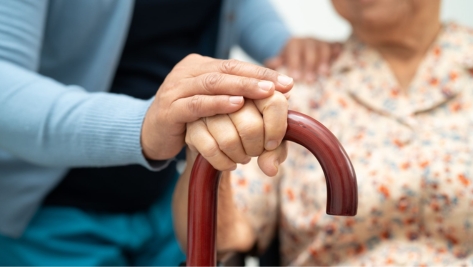Crucial Role of Evidence in Personal Injury Claims

As a personal injury solicitor, it is difficult to understate the importance of evidence in establishing who is at fault for an accident while making a personal injury claim.
Indeed, when a client comes to us with serious (and sometimes life-changing injuries) following an accident, one of the first things we will do is gather as much evidence as possible relevant to the issue of who is at fault. It is not always clear cut as to exactly why an accident occurred, and who was to blame, and there are often differing accounts as to the accident circumstances.
In this situation, the role of evidence is to assist you and the Court in weaving together a picture of what likely happened so that the claim can be justly resolved, and the right party compensated.
Gathering Evidence After a Serious Road Traffic Incident
Evidence which can assist in establishing who is at fault for an accident can come from a variety of different sources, not all of which can be given the same weight.
For example, in claims arising from road traffic accidents, the best sources of evidence often include CCTV or dashcam footage, contemporary first-hand accounts from witnesses to the accident and even evidence from experts who can examine the scene as a whole and forensically reconstruct the accident.
It is important to act quickly to obtain surveillance evidence as CCTV and dashcam footage will be erased over time and the memories of witnesses will fade.
There are other sources of evidence, for example, hearsay evidence or second-hand witness accounts, that should be treated with some caution, but can still be useful for a Court in determining what likely happened and coming to a view on who was to blame.
It is important that all avenues and sources of evidence are explored as early as possible in the life of a claim; if this exercise is left until too late, the evidence may no longer be available, and you may have missed an important opportunity to strengthen your claim.
Case Study: Brown & Anor v Sestras & Others (May 2023)
The evidence you have managed to obtain, no matter what source it comes from, can make all the difference between a claim that wins and a claim that fails. This was clearly illustrated in the case of Master Bronte Brown & Miss Lacey Brown -v- Mr Cosmin Sestras and others which recently went before Her Honour Judge Howells who sat as a Deputy Judge in the High Court.
The claim involved serious injuries suffered by Master Brown (then aged 9) in a road traffic accident which occurred on 16 July 2017 on the A10 between Hertford and Hoddesdon.
Details
At the time of the accident, the Claimant was a rear-seat passenger travelling in a Peugeot car driven by his mother, Ms Sellers. The Claimant was joined in the vehicle by Mr Graham (his mother’s partner) along with his sister, Lacey, and Mr Graham’s son, Bobby, who accompanied him in the back seats.
It was the group’s evidence that, at the time of the accident, they were travelling on the A10 to drop off Mr Graham and his son at home following a family day out together. The Claimant had unstrapped his seatbelt to remove his shoe which was causing discomfort, and his mother had told him off. At around the same time, Ms Sellers, Mr Graham, and Bobby all became aware of a dark car, described as a black Mercedes Benz car, which was effectively tailgating them.
The Mercedes then moved into an inside lane behind a lorry, undertook the Peugeot, and then cut back into the lane directly in front of them. The sudden manoeuvre by the Mercedes, unfortunately, caused Ms Sellers to lose control of her vehicle; the vehicle subsequently crossed into the inside carriageway, left the road, and was thrown down the embankment into a nearby field. The Mercedes did not stop at the accident scene and drove off.
Following the accident, although Ms Sellers, Mr Graham, and Bobby were all able to provide first-hand witness accounts which described the car, the driver, and the driver’s passenger in good detail, unfortunately, they were not able to recall the vehicle registration number; the police were therefore not able to identify the driver’s name and address on the basis of their accounts alone.
Hearsay Evidence in the Serious Injury Case
Around 4 hours following the accident, the police received an anonymous call from a man who claimed he had witnessed the accident. It was his evidence that he had been driving on the A10 when he witnessed a jet-black Mercedes undertaking a Peugeot and driving in a dangerous manner.
He then saw the Peugeot lose control and leave the road. When he saw the Mercedes speed away, he reported that he tailed the Mercedes driver for around 4-5 miles to a roundabout in Harlow, during which time he managed to make a note of the vehicle registration number.
Although the evidence given by this man was potentially crucial to the investigation, unfortunately, he made it clear he was not willing to provide his personal details or be a witness in any court proceeding.
Once the police had the vehicle registration number, they were able to verify via an image captured using automatic number plate recognition camera that the vehicle alleged by the anonymous caller to have caused the accident had been driving on the A10 within a few minutes of the accident.
Subsequently, the police were able to track down Mr Sestras who was purported to have been the driver of the Mercedes which caused the accident. This was not the end of the story, however, and Mr Sestras subsequently denied that he had any involvement in the accident.
Mr Sestras accepted that he had been driving a black Mercedes on the A10 around the accident location at the time of the collision, but he denied any knowledge or involvement in the accident itself.
Once personal injury proceedings were commenced, an admission of liability for the accident was not forthcoming and Mr Sestras continued to deny any involvement. The claim subsequently proceeded to a trial on the issue of liability in 2023.
Issues to be resolved at trial
- Whether Mr Sestras was correctly identified as the party involved in the collision;
- Whether the accident was caused by the negligent driving of Mr Sestras.
Main Evidence Provided Before the Court
- First-hand witness accounts from Ms Sellers, Mr Graham, and Bobby
- First-hand witness accounts of Mr Sestras and his partner
- Expert evidence from accident reconstruction specialists
- Image of the Mercedes captured using automatic number plate recognition software
- Anonymous account provided to the police 4 hours post-accident
Validity of an Anonymous Witness in a Serious Road Traffic Incident
Interestingly, the outcome of the trial centred primarily on the issue of how much weight should be given to the hearsay evidence provided by the anonymous caller.
During the life of the claim, the Claimant’s solicitors had not managed to re-establish contact with the caller and so his account had not been verified in a formal witness statement and the parties came to Court with no opportunity to cross-examine the witness as to his account.
In analysing whether the hearsay evidence before the Court could be relied on, the Judge adopted the approach laid down in Welsh v Stokes [2008] which was to consider all the factors set out in section 4 of the Civil Evidence Act 1995.
The conclusion was that the evidence ‘has the ring of truth about it,’ especially once considered ‘as part of the evidential picture overall.’ Indeed, the Judge considered that the anonymous account corroborated with the other evidence in the case, particularly the first-hand witness accounts of Ms Sellers, Mr Graham and Bobby, and the image of Mr Sestras’ black Mercedes Benz on the A10 that had been captured using automatic number plate recognition software.
Conclusion in the Case of Brown & Anor v Sestras & Others (May 2023)
Overall, the Judge concluded as follows: “I find that the dark car responsible for this accident was the Mercedes driven by Mr Sestras and, when he and his witnesses say it was not him, they are not being honest. I reach that conclusion by piecing together the timeline and assessing the evidence overall.”
This judgement shows the importance of gathering all evidence that is available when it comes to the issue of who is at fault for an accident. In and of itself, the anonymous account was possibly not enough to conclude that Mr Sestras was at fault for the accident.
It is right that hearsay evidence is treated with some caution, and it is never going to be as reliable as CCTV footage or dashcam footage of an accident, however, it should not be discarded just because it is hearsay. It was the balance of evidence from a variety of diverse sources that made the difference here and painted a ‘compelling and persuasive picture’ for the Court.
Please note
The information on the Anthony Gold website is for general information only and reflects the position at the date of publication. It does not constitute legal advice and should not be treated as such. It is provided without any representations or warranties, expressed or implied.
Our Latest Injury & Medical Claims Insights
- October 6, 2025
Jess’s Rule – a welcome reminder to reconsider persistent symptoms
- September 26, 2025
Intermediate track injury claims: the rise of early settlement offers
- August 26, 2025
Anthony Gold Solicitors welcome Helen Whittam as a new Support and Rehabilitation Coordinator in the Injury and Medical Claims Team
- August 19, 2025
Contributory negligence and children
- August 13, 2025
Video: From tragedy to triumph – Eliezer’s journey after a life-changing accident
- July 9, 2025
What is Contributory Negligence and How Could it Affect Your Claim?
Latest Articles
View allGuide: November 7, 2025
Guide: November 7, 2025
Guide: November 6, 2025
Contact the Conveyancing team today
Contact us today
"*" indicates required fields
Contact the commercial
& civil Dispute team today
"*" indicates required fields
Contact the Conveyancing team today
Contact the Conveyancing team today
Contact the Wills, Trusts
& Estates team today
Contact the Court of
Protection team today
Contact the Employment Law team today
Contact the Clinical Negligence team today
Contact the Family & Relationships team today
Contact the Personal Injury Claims team today
Contact the leasehold & Freehold team today
Contact the Corporate & Commercial team today
Contact the housing & disputes team
"*" indicates required fields














